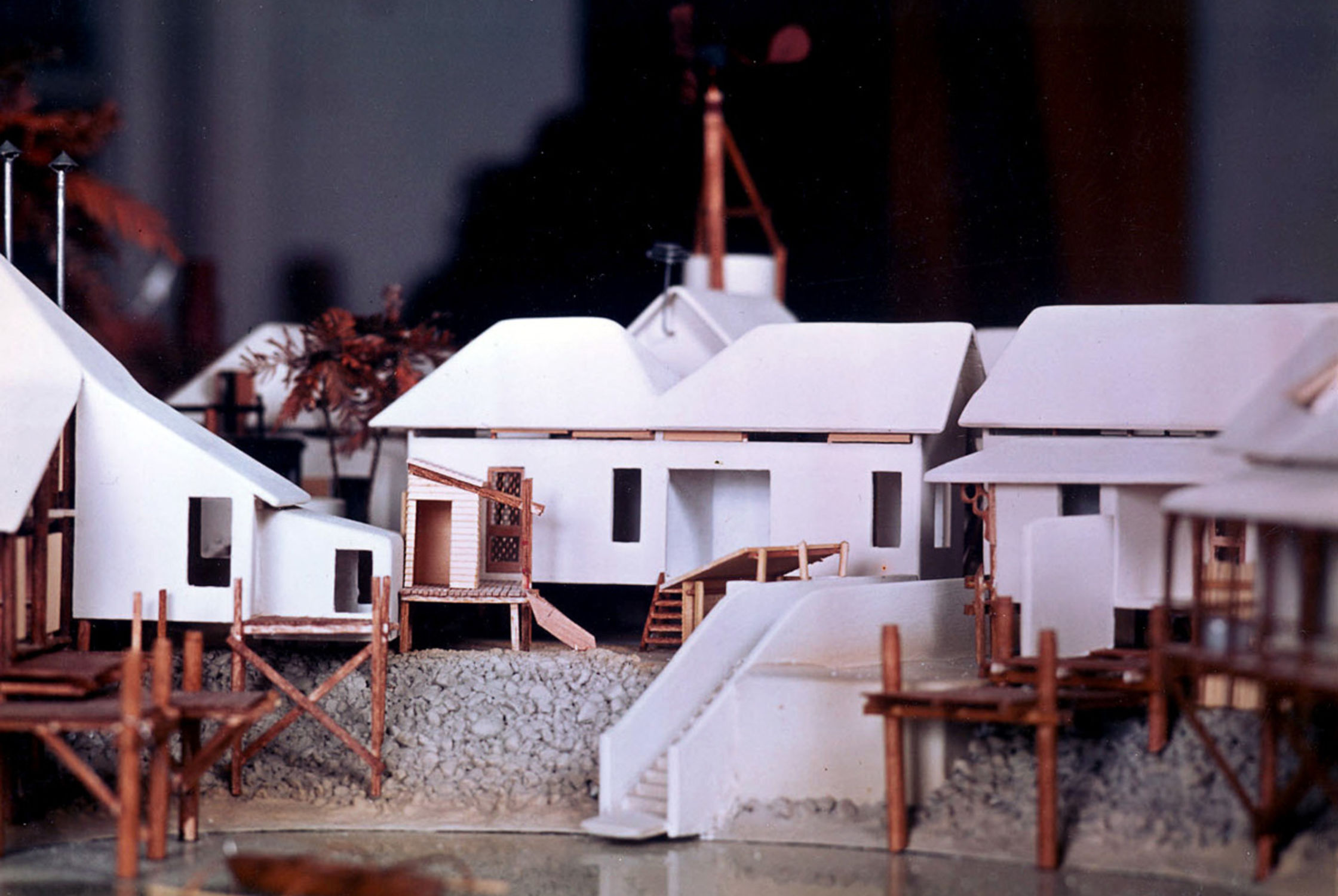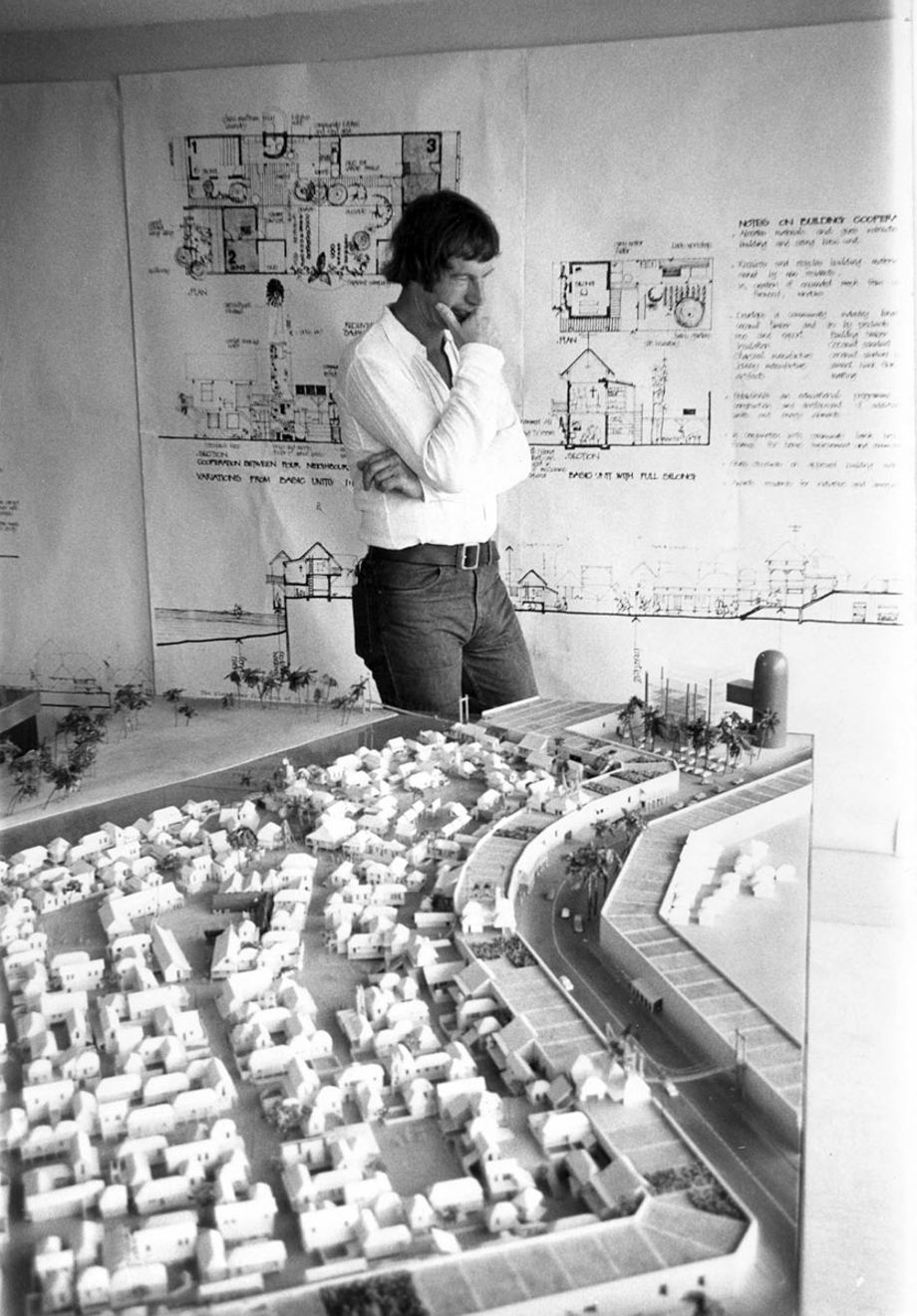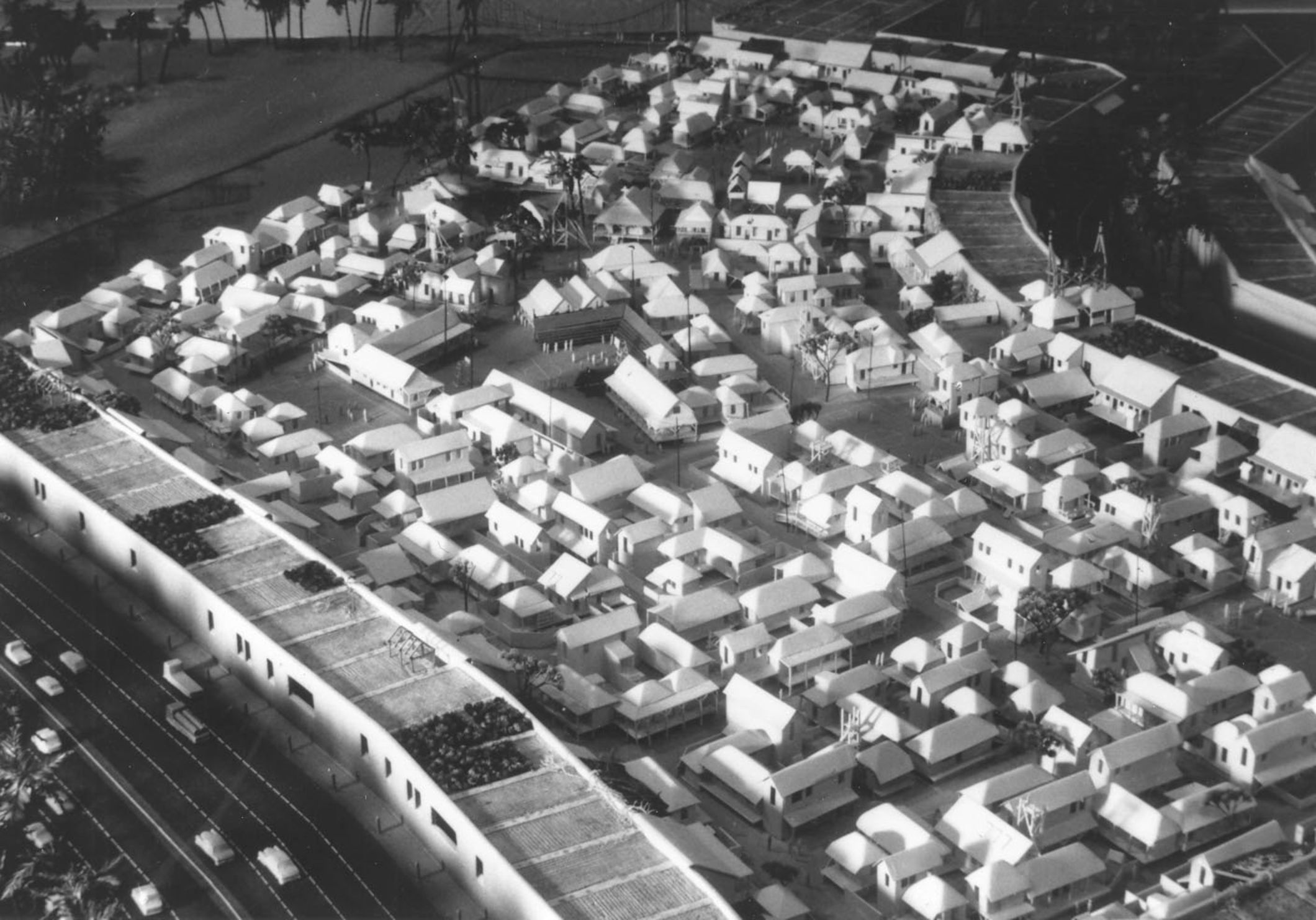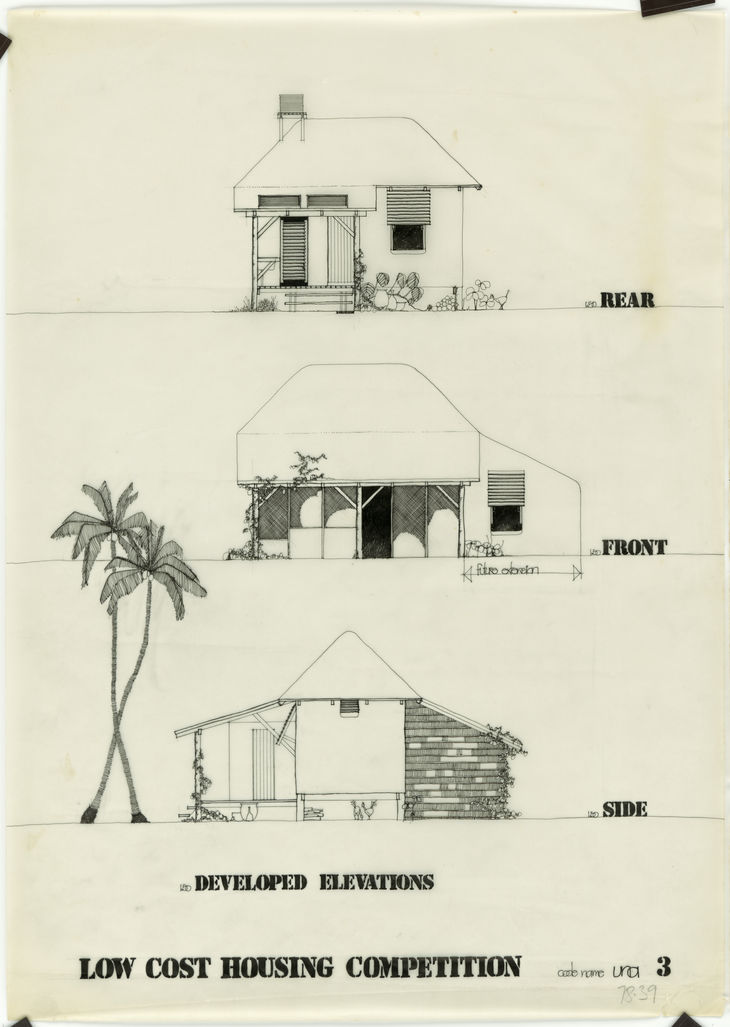
Philippines Housing Competition


| Civic & Community |
| Residential |
In 1976 the practice won a major international architectural competition for a community housing project to stimulate a total reappraisal of housing for the poor and, in this particular instance, for the squatter settlement of Manila. The concept was based on self-built housing and explored distinctive aspects of the people involved — their profound sense of community and distinctive construction methods utilising available resources. This approach was envisaged as providing greater security and better standards of living for the community within the dictates of the existing societalparadigm.
The brief required a specific design to accommodate 500 families on a five hectare site of reclaimed land. Alongside this was a schematic proposal for the design of an entire new town with a population of100,000.
The main feature of the design was the provision of a continual string of buildings around the boundary of each barangay (community) in which co-operatives, energy centres and other commercial enterprises could be accommodated. Following the existing social pattern, each barangay would also contain its own elementary school, health clinic, church, market, and meeting place. It would be subdivided into four smaller neighbourhoods, each with 130 housing sites, a communal laundry, waste disposal plant and compostunit.
For local political reasons, the project did notproceed.




